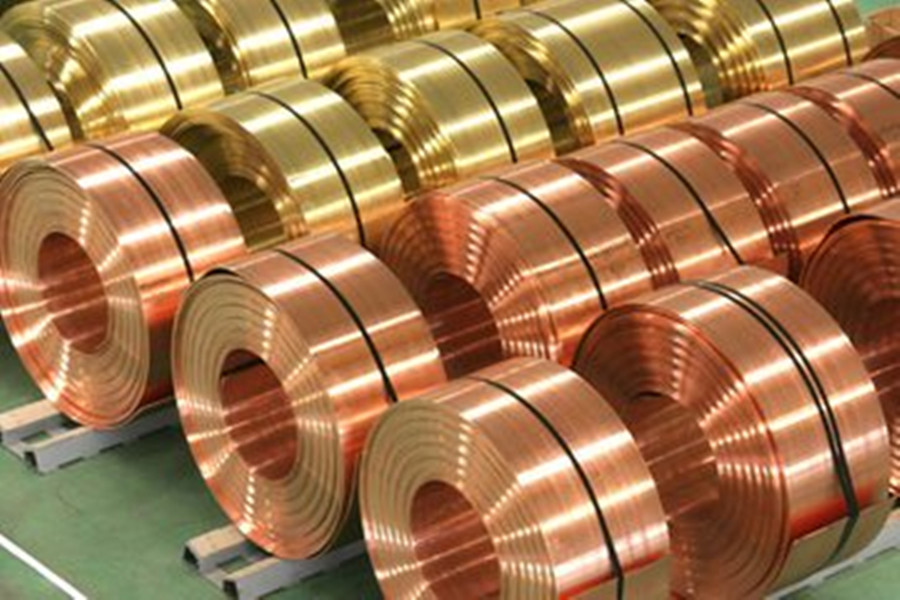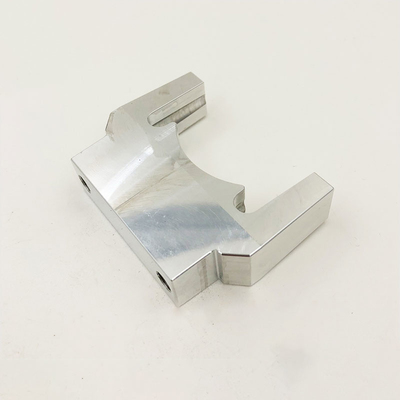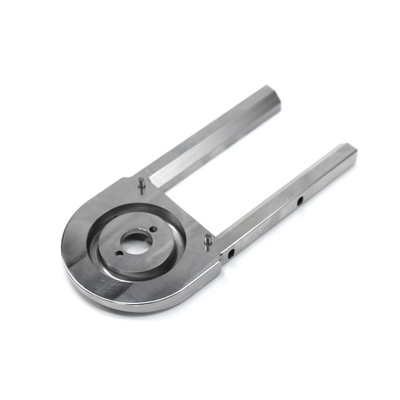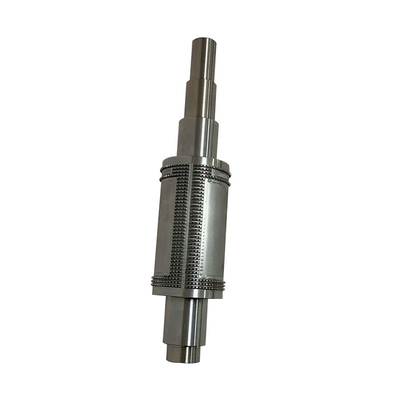How long can non-ferrous metals remain red?
In recent years, the non-ferrous metals futures market has been splendid, and both the long and the short have repeatedly staged the "expectation and reality dispute", triggering price fluctuations. According to industry insiders, the "hands-off" between reality and expectations is due to the existence of potential change factors. The closer to these factors, whoever takes the initiative. At present, the non-ferrous metal market is still continuing the "expected deviation from reality" situation, and the market outlook for various varieties is still promising.
"The battle between reality and expectations" is repeatedly staged
Observing the non-ferrous metal market in recent years, it is found that the market is based on a dispute between reality and expectations, which often triggers large price fluctuations.

Take copper as an example. In the first half of this year, a decrease in copper supply is expected to permeate the market. On the one hand, foreign garbage is rejected, and the increase in environmental protection standards has led to a sharp drop in the imports of waste copper from the seven types of dismantling, resulting in a reduction in the supply of raw materials; on the other hand, This year is a year of intensive expiry of contracts for major mines in the world. After the contract expires, labor negotiations can easily lead to strikes, and the possibility of supply interruption in mines increases. In addition, the economies of Western countries led by the United States have steadily rebounded, and signs of inflation have begun to emerge, which is expected to drive the demand for copper as a safe-haven asset.
In this context, at the beginning of the year, major institutions generally expected copper prices in 2018 at US$6800-8000/ton.
However, the reality is that the trend of copper prices fell from a high of US$7312/ton at the beginning of the year to US$6532/ton at the end of March, and recently rebounded to US$7,100/ton, which is far from expectations.
Not only copper, but also in other non-ferrous metal varieties, the deviation between expectations and reality has been repeatedly staged.
In terms of aluminum, in the first half of 2016, based on the judgment of the sharp decline in the social inventory of aluminum ingots at that time, many people are firmly optimistic about the aluminum price in the future. Pessimistic about the future. In the end, due to severe shortages in the spot market, the futures price has risen by RMB 3,000/ton.
By 2017, based on the gradual acceleration of adjustments to the industrial chain stimulating high aluminum prices and the rapid accumulation of record inventory levels, the short side believes that it is difficult for futures prices to rise further in the future. According to the policy, many parties have vigorously cleaned up illegal production capacity and expected production restrictions in the "2+26" heating season in cities, and are optimistic about the future trend of aluminum prices. In the end, under the stimulus of production restrictions, the price of aluminum once climbed to a stage high above 17,000 yuan/ton.
In response to the conflict between reality and expectations, Guotai Junan Futures Nonferrous Metals analyst Ji Xianfei told a reporter from China Securities News: “The core of futures research is the future supply and demand situation, which requires separate judgments on future supply and demand. Because of the greater uncertainty in the future “Deviation between expectations and reality” often occurs. When “expectations and reality diverge”, futures prices will self-correct to meet expectations.” For the non-ferrous market, the supply and demand of non-ferrous metals are inelastic, and supply and demand The market is relatively mature, and the probability of expected mistakes is low. Once a certain non-ferrous metal product has "deviated from expectations and reality", it will trigger a phased or trending market for that product.
What factors lead to the phenomenon of "difference between expectations and reality"?
Ji Xianfei believes that this is mainly affected by three factors: First, emergencies interfere with expectations. When emergencies such as natural disasters, strikes, and production failures occur in the market, they will affect future supply or demand; second, companies’ self-issued behaviors Influencing the adjustment of future supply or demand expectations is an economic category. For example, companies actively adjust the scale of supply and demand according to profit conditions; third, managers adjust the company's supply and demand expectations from the perspective of industrial development.
"At present, the market also has anticipation and reality disputes over the current nickel, copper, and zinc prices. The reason for this dispute is that there are potential changing factors in the market. The closer to these factors, whoever takes the initiative will take the initiative. "Che Hongyun, chief non-ferrous analyst at SDIC Essence Futures, said.
For nickel, Che Hongyun said that since the end of 2017, refined nickel has changed from the weakest variety to the strongest variety. Many people also define it as an expectation of future new energy demand, but the actual situation is that refined nickel itself It has long been in short supply, and some producers of refined nickel did not return to the market after they withdrew in 2015. Not only that, manufacturers will invest new production capacity in nickel sulfate for new energy batteries, and nickel sulfate is a different species from refined nickel. Under this circumstance, the supply of refined nickel is unlikely to increase.
In terms of zinc, zinc has been the strongest variety in the past two years, but since February this year, the price has adjusted back by 15%. The increase in inventory has put a lot of pressure on prices. However, the reality is that the release of China's zinc mine production is still not as expected, and the fundamentals of global zinc are still difficult to turn into surplus, so the factors that support the increase in zinc prices are still there.
Liu Chao, chief researcher of BOCI Futures Nonferrous Metals, believes that the reason for the "divergence between expectations and reality" in the copper market is mainly affected by three factors: First, although the import volume of scrap copper has declined, the increase in copper content has led to actual scrap Imports have not decreased; secondly, over 30 mining companies are expected to have their labor contracts expired this year. The market is increasingly optimistic that more large mines will reach agreements with miners under the background of stable copper prices and rising mine profits. In order to avoid losses caused by supply disruptions; thirdly, inflation expectations in the United States continue to rise, and Europe is also expected to withdraw from loose monetary policy in 2019. However, as the world's largest copper consumer, the role of inflation on my country's copper consumption is not obvious. In this context, the price of copper has the conditions for continuous fermentation.
Linkage between futures and cash can last
"The operation of commodity prices is closely related to the economic environment and the fundamentals of varieties, and prices are also generated by the superposition of reality and expectations. When the dominant factors occur or potentially change, the spot price will inevitably change. Correspondingly , Expected factors can only temporarily change prices. Only when the expected factors continue to be confirmed and the spot market follows up, the evolution of futures prices can be sustainable.” Che Hongyun said.
In this context, how will the outlook for non-ferrous metals be interpreted?
Ji Xianfei judged from the perspective of "expectations and reality" that the future copper price trend will be too high. On the one hand, the South Indian copper smelter will be closed, which will affect the future supply of copper; on the other hand, the Chile Escondida copper mine salary negotiations continue, and the strike may trigger the copper mine. Supply reduction is expected; for zinc, there is limited room for short-term price increases, mainly due to the substantial increase in global zinc mine supply, which is expected to change the tension of zinc supply; there is still room for increase in lead prices in the later period, supply tensions and consumption increases continue to transform into reality. Inventory continues to decline.
“At present, the long-term trend in related sectors represented by Nonferrous Metals is gradually becoming clear.” Guosen Futures Nonferrous Senior Analyst Gu Fengda said. On the one hand, the supply-side growth rate is clearly limited. Environmental improvement and industrial chain upgrades, in the context of a number of central government policies and measures to further promote the supply-side reform of bulk industrial products, the growth rate of the supply of bulk commodities represented by non-ferrous metals has declined significantly. On the other hand, as China’s macro-economy “replaces quantity for quality” drives the upgrading of industrial consumption, after years of destocking, the price rebound of bulk industrial products has a solid foundation. Overlapping some varieties faces high holdings and low inventories. The market Short-term mood changes amplify volatility, and maintain judgments that the price of non-ferrous metals has moved upward. In the sector, priority is given to recommending long opportunities in nickel, copper, aluminum and other varieties.
Liu Chao also believes that, overall, my country’s GDP growth target will be lowered this year, low currency growth of around 8% has become the norm, and the impact of deleveraging and environmental protection on the terminal will gradually be reflected. It is expected that terminal demand will continue to grow, but the growth rate will fall. For copper, aluminum and zinc, changes in demand are not prominent, but after supply problems caused by short-term events are disturbed, impulsive fluctuations are more prominent, and continuous motivation is not strong. However, the demand for nickel and cobalt has increased more but the supply is limited, and the upward trend has not changed.
Link to this article: How long can non-ferrous metals remain red?
Reprint Statement: If there are no special instructions, all articles on this site are original. Please indicate the source for reprinting:https://www.cncmachiningptj.com
 PTJ® provides a full range of Custom manufacturer of precision fabricated parts made from aluminum parts, brass parts, bronze, copper parts, high yield alloy, low carbon steel investment casting, high carbon steel and stainless steel alloy. Capable of handling parts up to +/-0.0002 in. tolerance. Processes include cnc turning, cnc milling, laser cutting,.ISO 9001:2015 &AS-9100 certified.
PTJ® provides a full range of Custom manufacturer of precision fabricated parts made from aluminum parts, brass parts, bronze, copper parts, high yield alloy, low carbon steel investment casting, high carbon steel and stainless steel alloy. Capable of handling parts up to +/-0.0002 in. tolerance. Processes include cnc turning, cnc milling, laser cutting,.ISO 9001:2015 &AS-9100 certified.
Tell us a little about your project’s budget and expected delivery time. We will strategize with you to provide the most cost-effective services to help you reach your target,You are welcome to contact us directly ( sales@pintejin.com ) .

- 5 Axis Machining
- Cnc Milling
- Cnc Turning
- Machining Industries
- Machining Process
- Surface Treatment
- Metal Machining
- Plastic Machining
- Powder Metallurgy Mold
- Die Casting
- Parts Gallery
- Auto Metal Parts
- Machinery Parts
- LED Heatsink
- Building Parts
- Mobile Parts
- Medical Parts
- Electronic Parts
- Tailored Machining
- Bicycle Parts
- Aluminum Machining
- Titanium Machining
- Stainless Steel Machining
- Copper Machining
- Brass Machining
- Super Alloy Machining
- Peek Machining
- UHMW Machining
- Unilate Machining
- PA6 Machining
- PPS Machining
- Teflon Machining
- Inconel Machining
- Tool Steel Machining
- More Material





